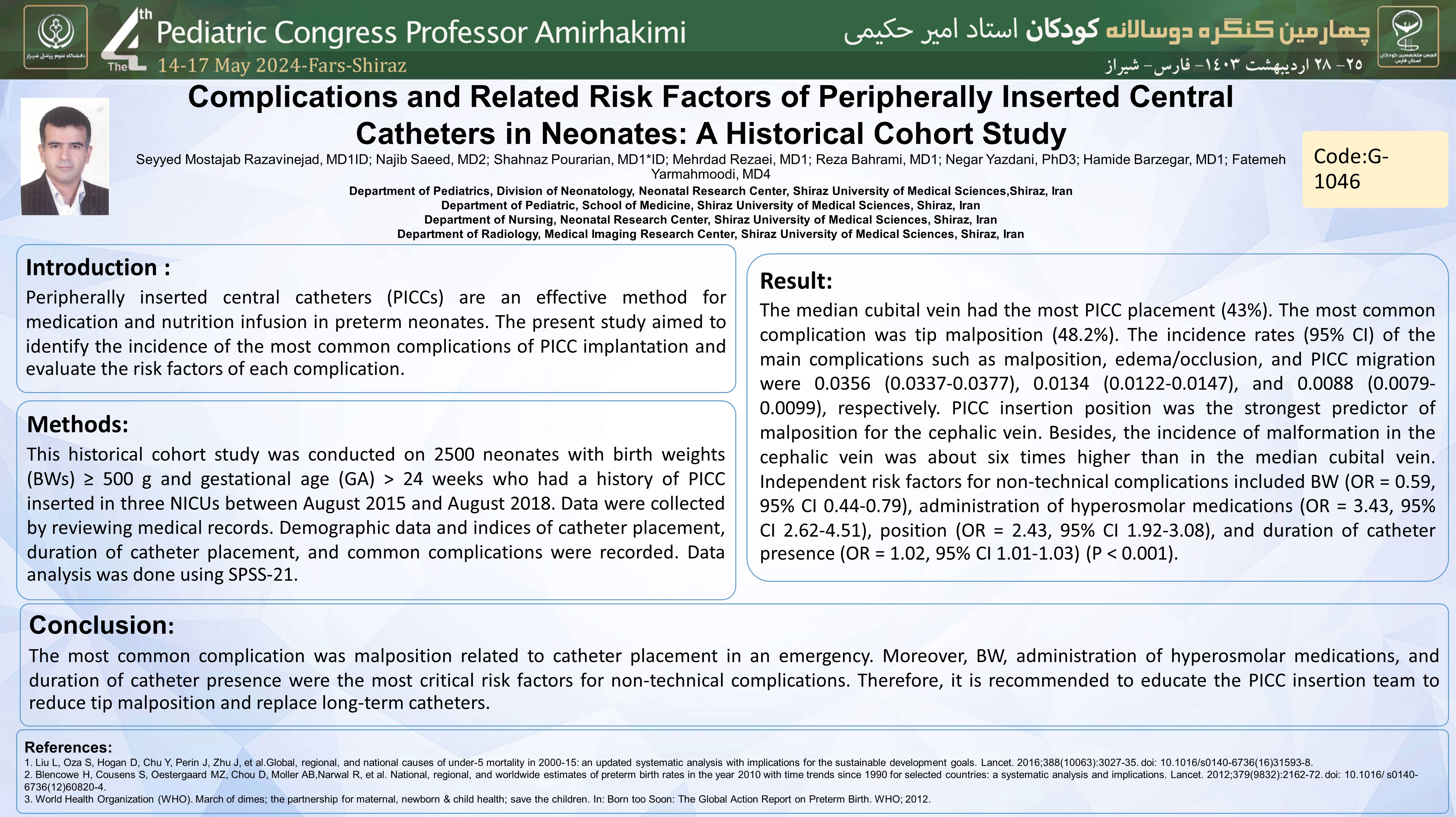عوارض و عوامل خطر مرتبط با کاتتر مرکزی در نوزادان : مطالعه کوهورت تاریخی
کد: G-1046
نویسندگان: Seyyed Mostajab Razavinejad © ℗, Najib Saeed, Shahnaz Pourarian, Mehrdad Rezaei, Reza Bahrami, Negar Yazdani, Hamide Barzegar, Fatemeh Yarmahmood
زمان بندی: زمان بندی نشده!
دانلود: دانلود پوستر
خلاصه مقاله:
خلاصه مقاله
Abstract Background: Peripherally inserted central catheters (PICCs) are an effective method for medication and nutrition infusion in preterm neonates. The present study aimed to identify the incidence of the most common complications of PICC implantation and evaluate the risk factors of each complication. Methods: This historical cohort study was conducted on 2500 neonates with birth weights (BWs)≥500 g and gestational age (GA)24 weeks who had a history of PICC inserted in three NICUs between August 2015 and August 2018. Data were collected by reviewing medical records. Demographic data and indices of catheter placement, duration of catheter placement, and common complications were recorded. Data analysis was done using SPSS-21. Results: The median cubital vein had the most PICC placement (43%). The most common complication was tip malposition (48.2%). The incidence rates (95% CI) of the main complications such as malposition, edema/occlusion, and PICC migration were 0.0356 (0.0337-0.0377), 0.0134 (0.0122-0.0147), and 0.0088 (0.0079-0.0099), respectively. PICC insertion position was the strongest predictor of malposition for the cephalic vein. Besides, the incidence of malformation in the cephalic vein was about six times higher than in the median cubital vein. Independent risk factors for non-technical complications included BW (OR=0.59, 95% CI 0.44-0.79), administration of hyperosmolar medications (OR=3.43, 95% CI 2.62-4.51), position (OR=2.43, 95% CI 1.92- 3.08), and duration of catheter presence (OR=1.02, 95% CI 1.01-1.03) (P0.001). Conclusion: The most common complication was malposition related to catheter placement in an emergency. Moreover, BW, administration of hyperosmolar medications, and duration of catheter presence were the most critical risk factors for nontechnical complications. Therefore, it is recommended to educate the PICC insertion team to reduce tip malposition and replace long-term catheters. Keywords: Bacteremia, Catheterization, Infant, Premature birth, Risk factors Cite this article as: Razavinejad SM, Saeed N, Pourarian S, Rezaei M, Bahrami R, Yazdani N, et al. Complications and related risk factors of peripherally inserted central catheters in neonates: a historical cohort study. Arch Iran Med. 2023;26(4):218-225. doi: 10.34172/aim.2023.33
